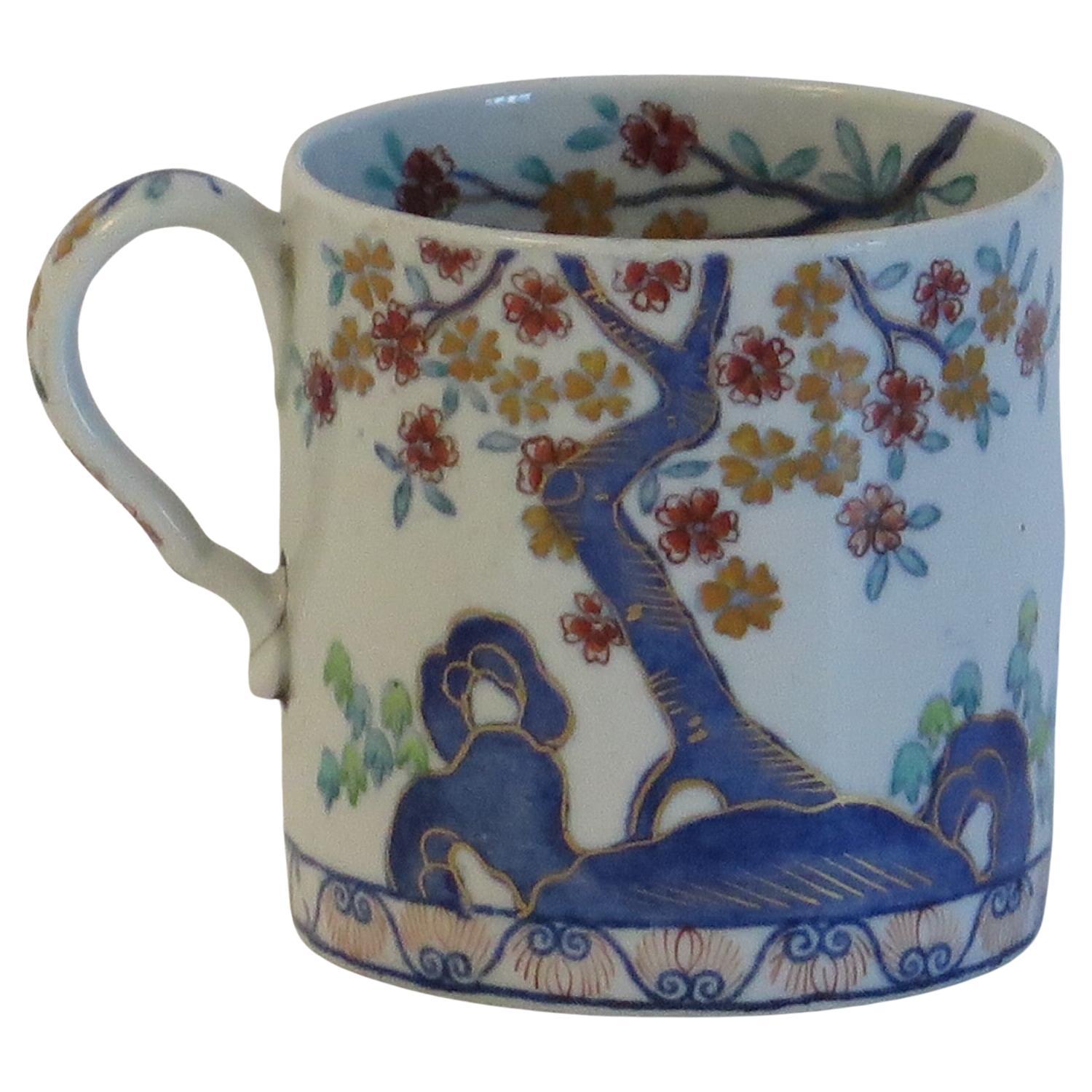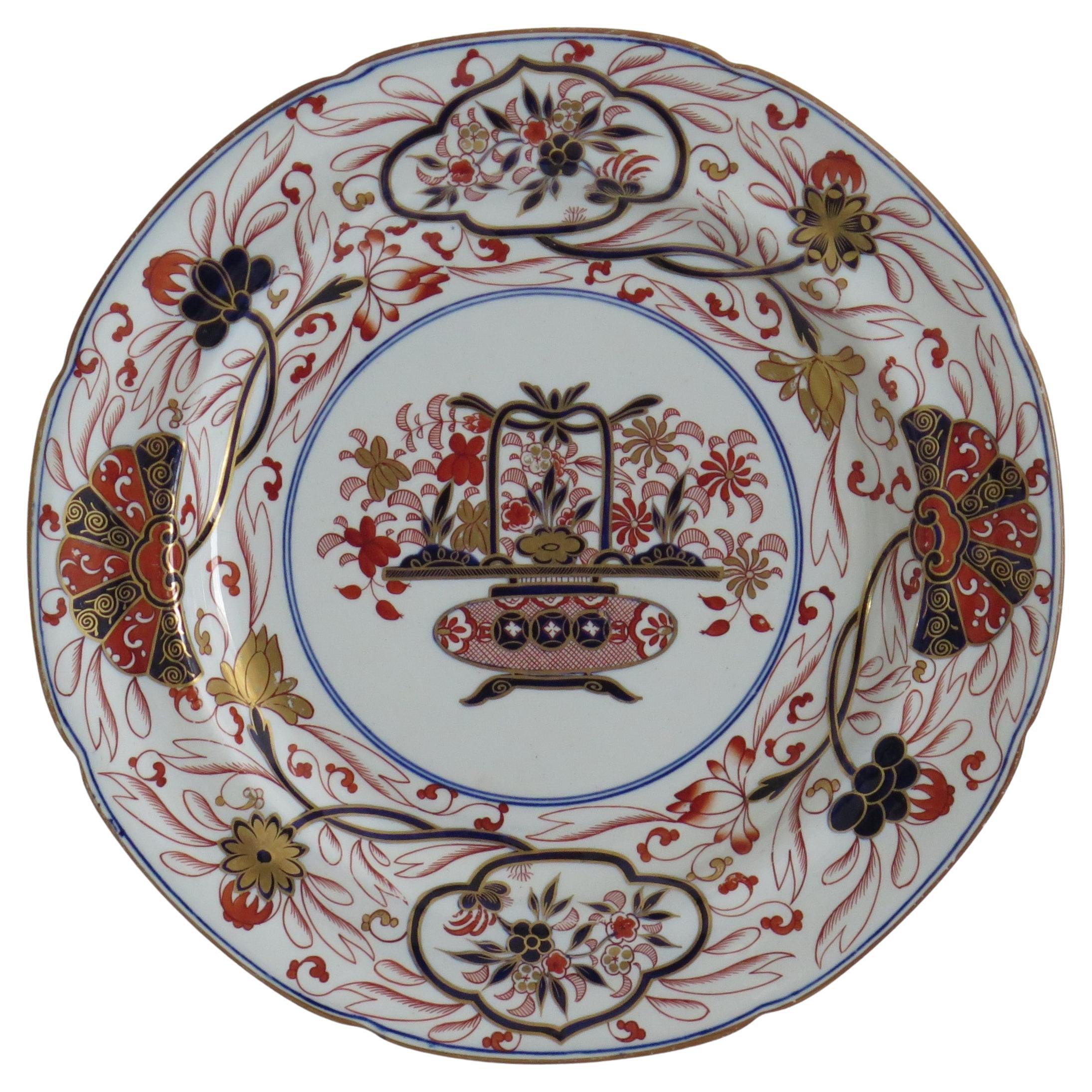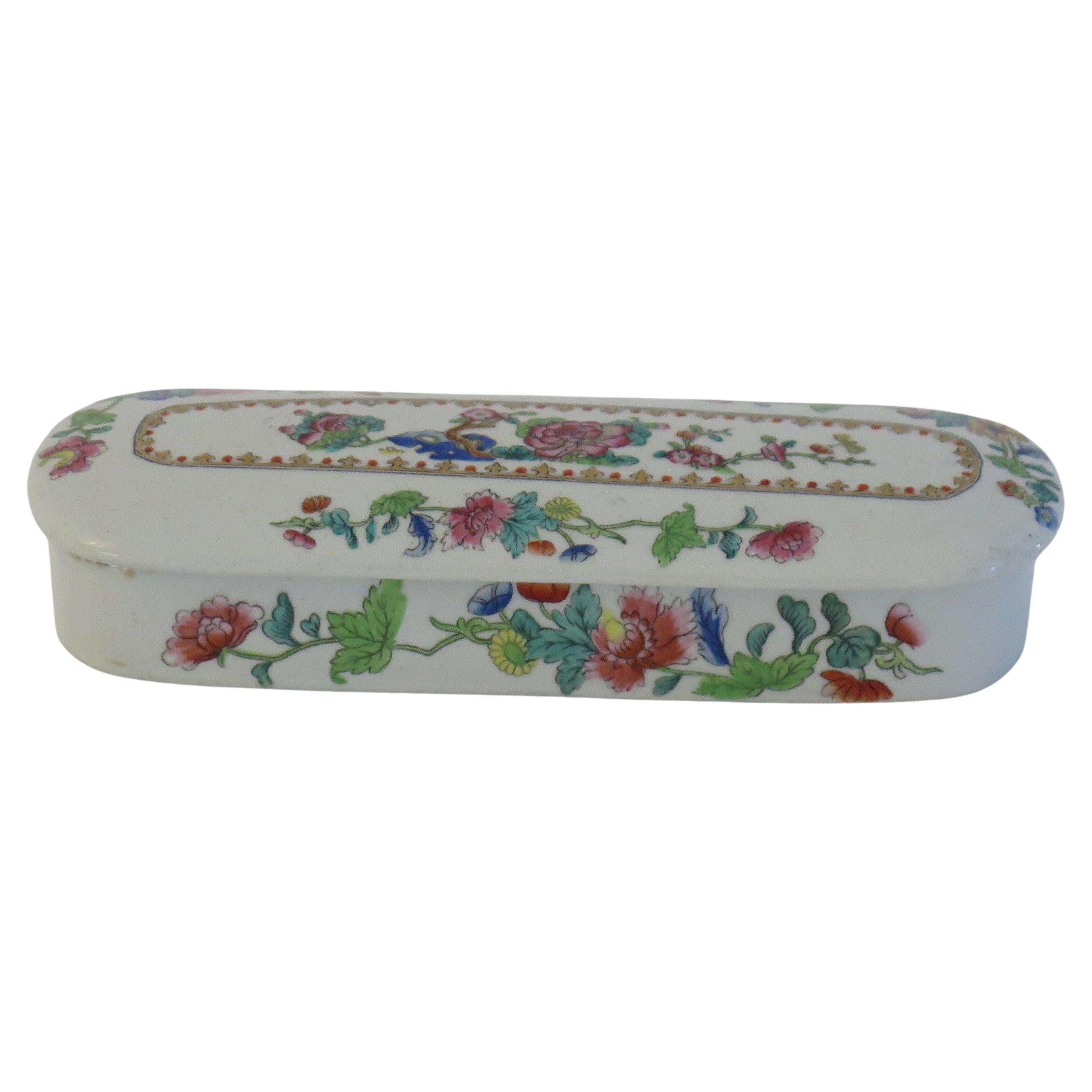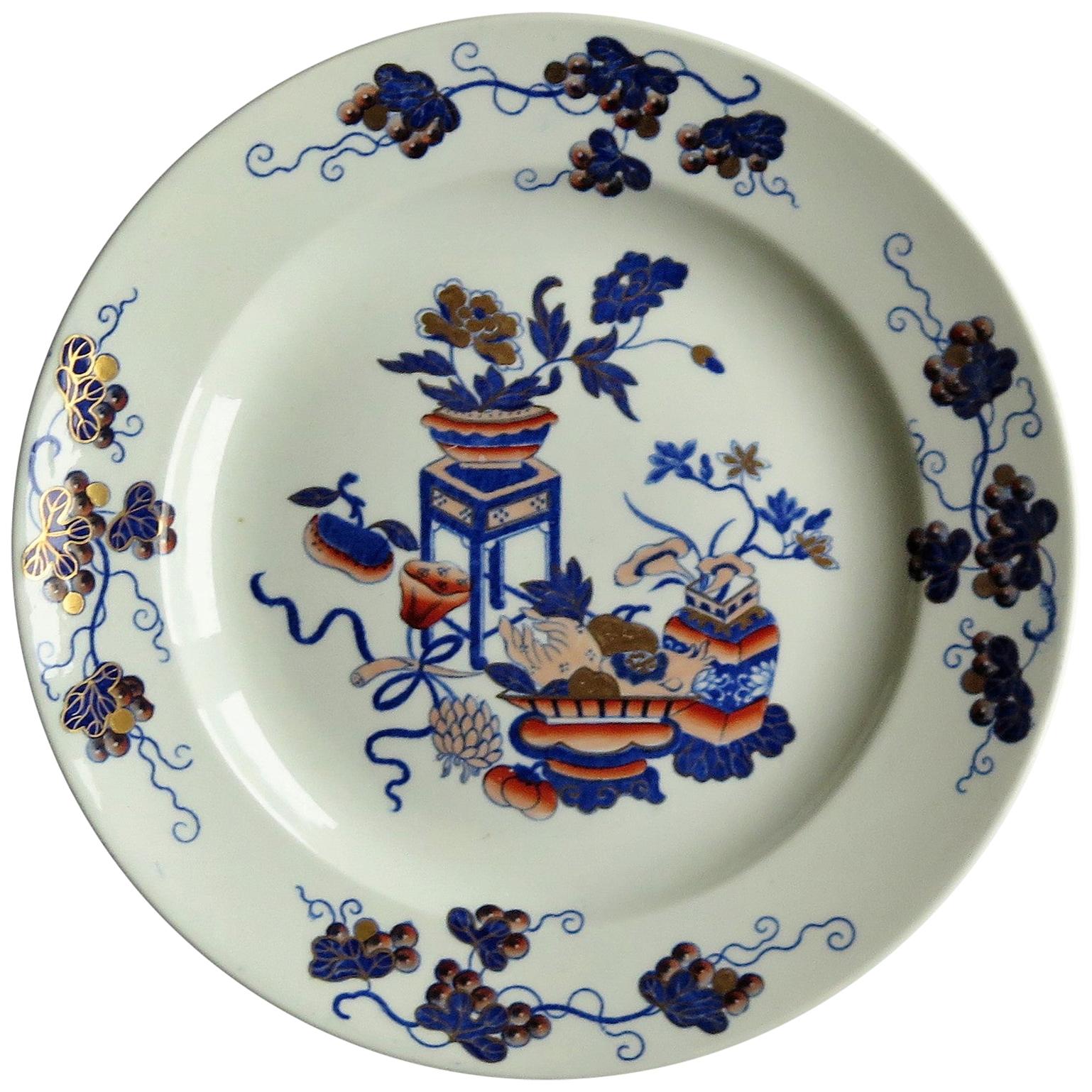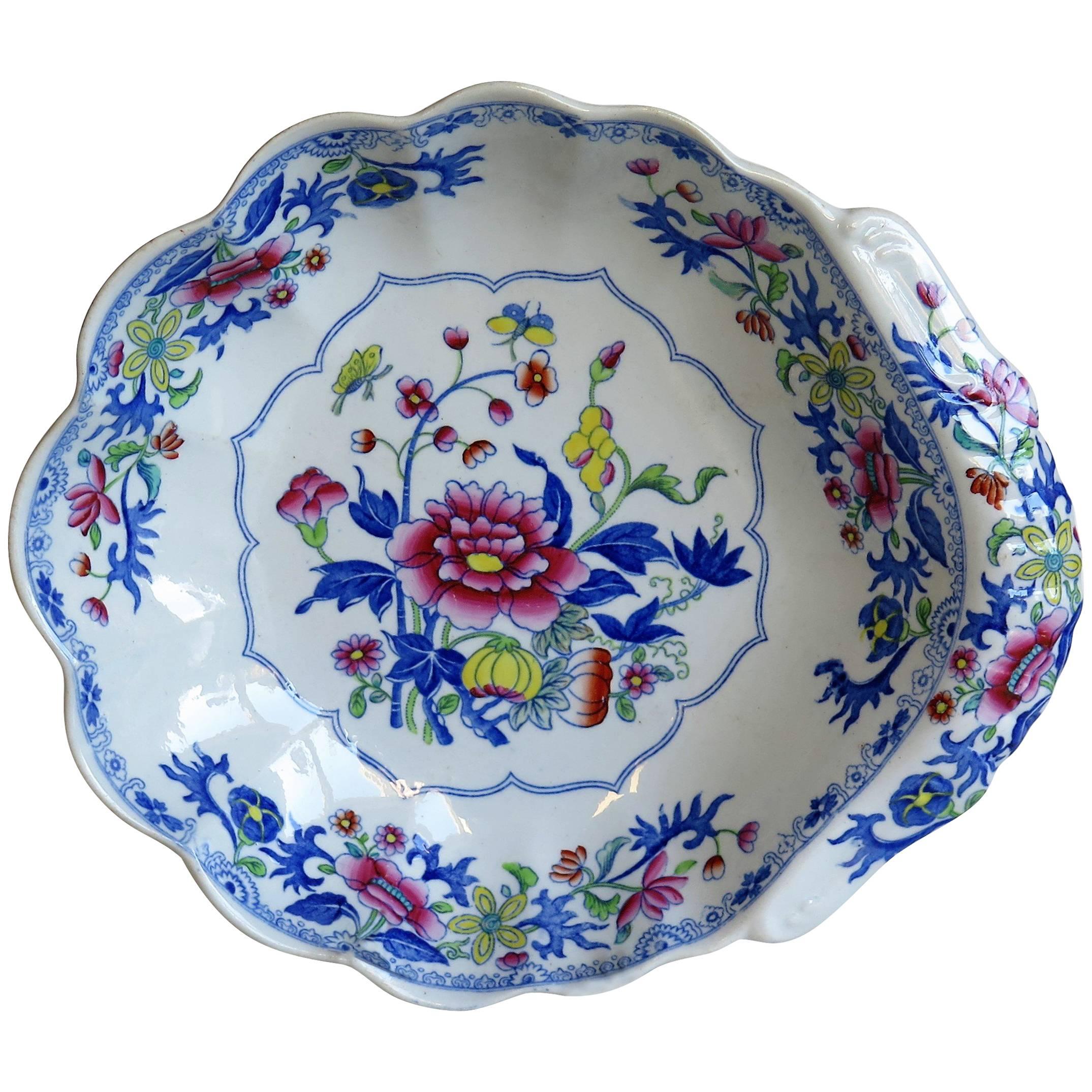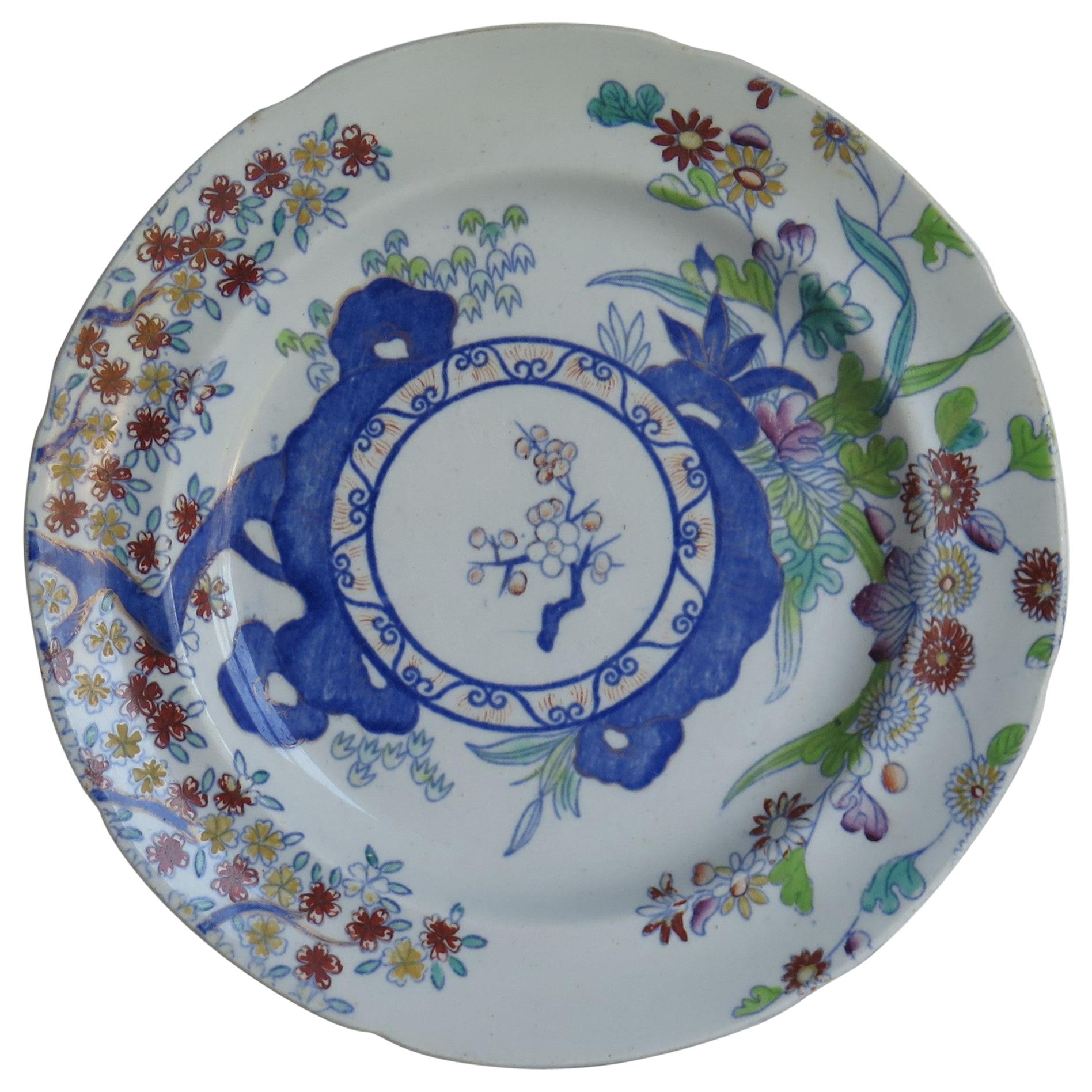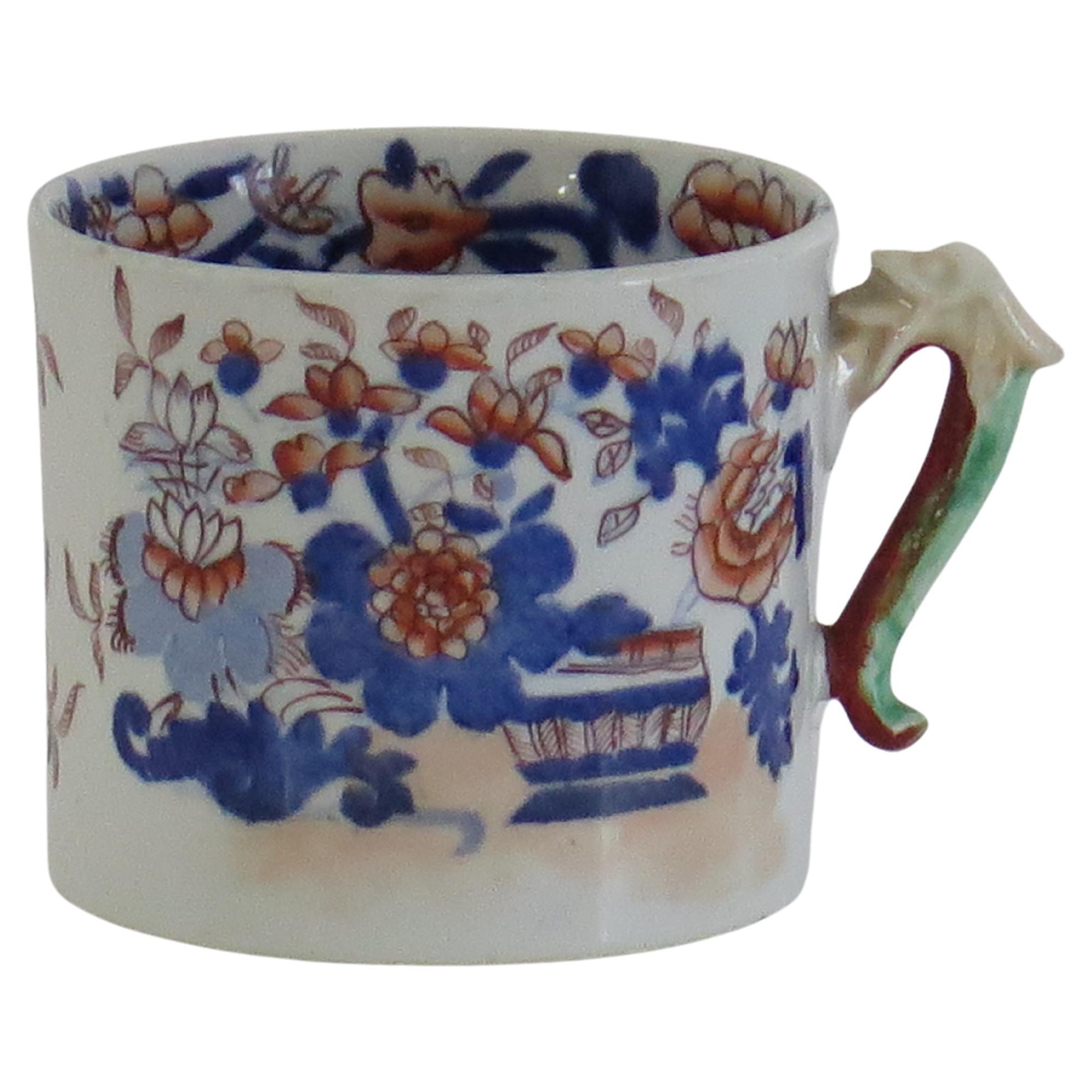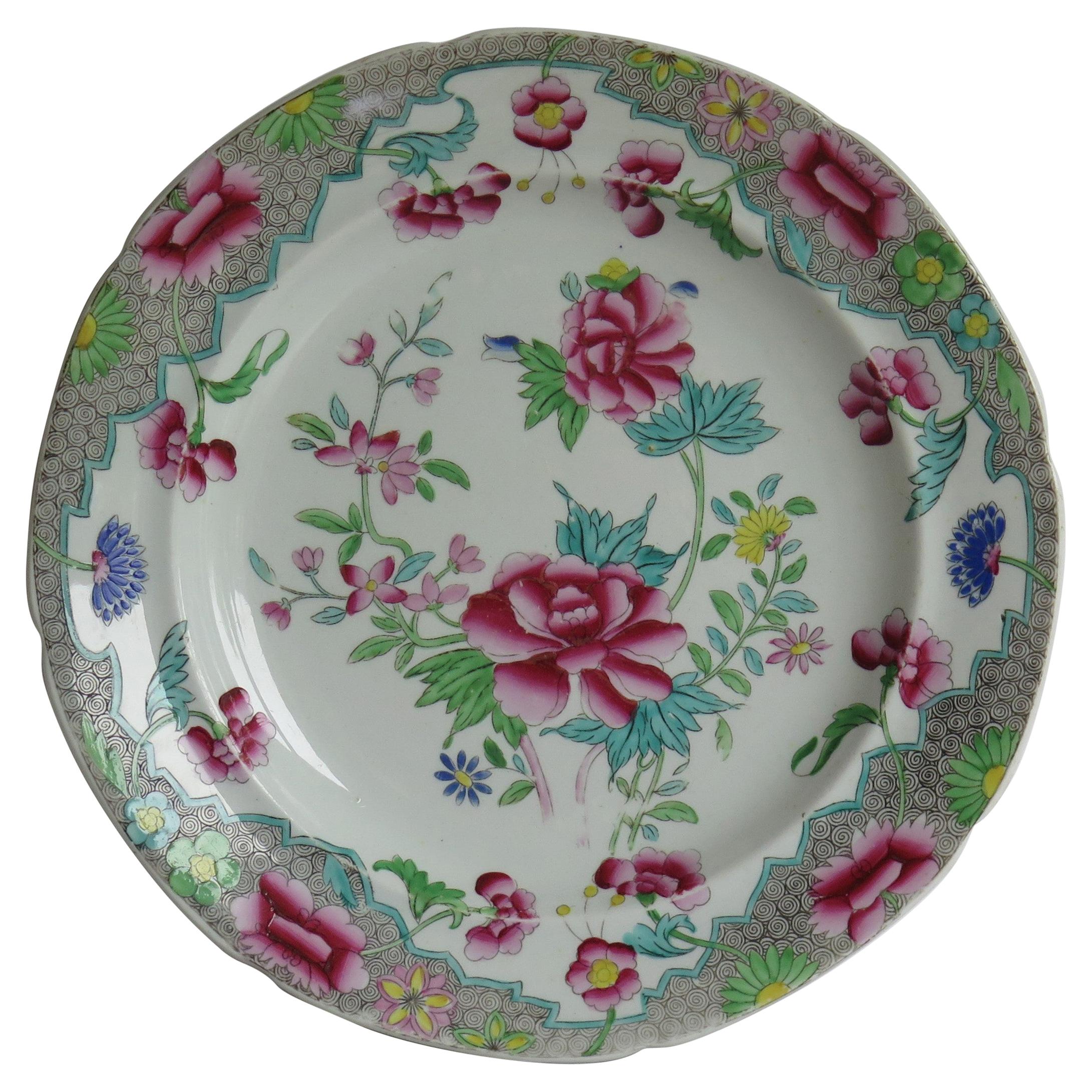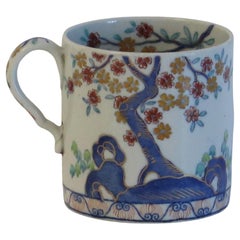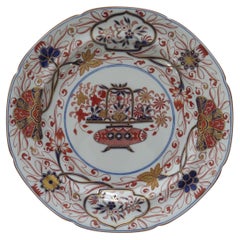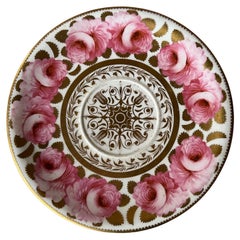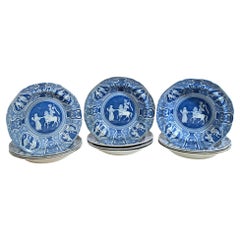
Late Georgian Spode Ironstone Plate Chinoiserie Pattern No. 3703, circa 1820
View Similar Items
Late Georgian Spode Ironstone Plate Chinoiserie Pattern No. 3703, circa 1820
About the Item
- Creator:Spode (Manufacturer)
- Dimensions:Height: 0.88 in (2.24 cm)Diameter: 9.63 in (24.47 cm)
- Style:Chinoiserie (Of the Period)
- Materials and Techniques:
- Place of Origin:
- Period:
- Date of Manufacture:circa 1820
- Condition:Wear consistent with age and use. Some slight pattern and gilding wear and surface scratching from use. Please see the images. Beautifully painted as is usual with Spode ceramics.
- Seller Location:Lincoln, GB
- Reference Number:Seller: P 11861stDibs: LU99039956983
Spode
Spode is one of the oldest and most distinguished of the great pottery companies of Staffordshire, the time-honored home of English ceramics. The firm’s blue and white bone china transferware is a timeless classic. Spode dishes compose the sort of elegant dinner service that most of us envision on a traditional holiday table.
The company was established in 1770 in Stoke-on-Trent by Josiah Spode, a friend and neighbor of another estimable English ceramist, Josiah Wedgwood. The Wedgwood firm first came to prominence for its tableware, which quickly gained favor in aristocratic households throughout Britain and Europe.
Spode was particularly known for two technical achievements in the firm’s early decades. The first was to develop a standard formula for the making of bone china — a type of porcelain (made with a mixture of bone ash, minerals and clay) that is dazzlingly white and so strong it can be used to create very thin translucent plates and vessels.
The other advancement was to perfect the making of transferware. That process involves the transfer of pictorial images inked on tissue paper — such as the garden scenery in the famous Willow dish patterns — onto ceramics that are then sealed with a glaze.
From the 1820s onward, Spode enjoyed tremendous success both in Britain and elsewhere owing to the beauty and vitality of its decorative imagery. By some counts, Spode created more than 40,000 patterns in the 19th century.
In 1833, following the sudden death of Josiah Spode III, business partner W. T. Copeland took over the company and changed its name to Copeland Spode (it later changed again, this time to W. T. Copeland and Sons). Collectors regard Copeland-marked pieces as Spode china. The Spode brand was revived in 1970.
Many favorite Spode patterns — among them Blue Italian, Indian Tree, Greek and Woodland — date to the company’s early years. Spode’s most popular pattern, Christmas Tree, was introduced in 1938.
Prices for antique and vintage Spode china vary widely, based on the size of the service, its condition and the pattern. An antique dinner service for 12 people or more, in good repair and complete with cups and serving dishes, will generally cost between $10,000 and $20,000. Such Spode services become heirlooms — a proud and timeless addition to a family’s table. And as you will see on these pages, Spode’s rich and varied wares offer a visual feast in and of themselves.
Find Spode serveware, ceramics and decorative objects on 1stDibs.
- Georgian Spode Coffee Can Ironstone Kackiemon Pattern 2117, circa 1820By SpodeLocated in Lincoln, LincolnshireThis is a good stone China (Ironstone) coffee can made by the SPODE factory in the early 19th Century, circa 1820. The coffee can is well potted with cylindrical shape and a loop handle with the distinctive Spode kink to it. The piece is beautifully decorated with hand painted enamels in the chinoiserie Kakiemon style, pattern number 2117. It has the Spode Stone China blue printed...Category
Antique Early 19th Century English Georgian Ceramics
MaterialsIronstone
- Georgian Spode Dinner Plate B Ironstone Chinoiserie Pattern No.2283, circa 1820By Josiah SpodeLocated in Lincoln, LincolnshireThis is a very beautiful hand painted dinner plate, produced by the Spode factory in the late Georgian period, Circa 1820. This is pattern number 2283, the chinoiserie decoration ...Category
Antique Early 19th Century English Chinoiserie Ceramics
MaterialsIronstone
- Georgian Spode Dinner Plate a Ironstone Chinoiserie Pattern No.2283, circa 1820By Josiah SpodeLocated in Lincoln, LincolnshireThis is a very beautiful hand painted dinner plate, produced by the Spode factory in the late Georgian period, Circa 1820. This is pattern number 2283, the chinoiserie decoration ...Category
Antique Early 19th Century English Chinoiserie Ceramics
MaterialsIronstone
- Georgian Spode Pen Tray 0r Lidded Box Ironstone Willis Pattern 2147, circa 1810By SpodeLocated in Lincoln, LincolnshireThis is a good stone China (Ironstone) Pen Tray or Box with lid, made by the SPODE factory in the early 19th Century, circa 1810. This piece comprises a base and a lid both made fro...Category
Antique Early 19th Century English Georgian Ceramics
MaterialsIronstone
- Georgian Plate by Spode in Gilded Bow Pot Pattern Number 2954, circa 1820By Josiah SpodeLocated in Lincoln, LincolnshireThis is a beautiful plate in the Bow Pot pattern, produced by the Spode factory and made of a type of earthenware pottery called Pearl-ware, in the early 19th century, circa 1820. ...Category
Antique Early 19th Century English Chinoiserie Pottery
MaterialsPearlware
- Georgian Spode Ironstone Shell Dish or Plate Bang Up Pattern No. 2886, Ca 1820By SpodeLocated in Lincoln, LincolnshireThis is an early 19th century stone china (Ironstone pottery) desert dish with a fluted shell shape, produced by Spode and dating from the George 111...Category
Antique Early 19th Century English Chinoiserie Decorative Dishes and Vid...
MaterialsIronstone
- Early Spode Hand Painted Porcelain Plate / Saucer, circa 1820By SpodeLocated in Ross, CARegency period finely painted plate/saucer with pink roses and gilt leaves, made in England around 1820.Category
Antique Early 19th Century English Regency Ceramics
MaterialsPorcelain
- Spode Neo-Classical Greek Pattern Blue Openwork Dessert PlatesBy SpodeLocated in Downingtown, PASpode neo-classical Greek pattern blue openwork dessert plates, Ceres with a Priestess, Four plates (4) Early 19th century From a large collection of Greek pattern Spode- more pi...Category
Antique Early 19th Century English Neoclassical Pottery
MaterialsPearlware, Pottery
- Twelve Spode Neo-Classical Greek Pattern Blue Soup PlatesBy SpodeLocated in Downingtown, PASpode Neo-classical Greek pattern blue soup plates, Refreshment for Phliasian Horseman, Set of twelve (12) Early-19th century The Spode Greek pattern ...Category
Antique Early 19th Century English Georgian Pottery
MaterialsPearlware, Pottery
- Spode Pottery Neo-Classical Greek Pattern Blue Set of Dinner Plates-33 PlatesBy SpodeLocated in Downingtown, PASpode Pottery neo-Classical Greek Pattern blue set of dinner plates-33 plates Zeus in His Chariot, Early-19th Century The Spode pottery undergla...Category
Antique Early 19th Century English Neoclassical Dinner Plates
MaterialsPearlware, Pottery
- Early Spode Red Greek Pattern TileBy Spode, Josiah SpodeLocated in Fort Lauderdale, FLA Neoclassical red transferware tile made by Spode 1806-1810, with the ‘Refreshments for Phliasian Horseman’ pattern. Sir William Hamilton’s Collection of Etruscan, Greek and Roman antiquities, first published in 1766 by Pierre d’Hancarville, was a landmark publication in English design. It intended to disseminate the Antique style through its engravings of Attic pottery. The catalog’s faithful reproductions of Classical vases led British potteries, including Spode, to adapt or even copy the ancient art for modern life. These Spode Greek pattern tiles reflect the major influence of Hamilton’s catalog on English Neoclassicism. The central scene was taken directly from the catalog. This tile can be dated to a narrow window of production in the Spode factory, 1806-1810. During that time, Spode used a technique known as the “Pluck and Dust” method to print in red transfer designs onto creamware. Using this method, source prints were transferred overglaze using tissue imprinted with a very faint rendition of the design outlined in sticky oil. The decorator applied the tissue to the object then carefully “plucked” or pulled it away, leaving the sticky oil design behind. Then, a finely-ground enamel color was “dusted” onto the surface, sticking to any areas that had the oil. A final firing at a low temperature in the enamel kiln made the pattern permanent. The Pluck and Dust technique improved upon bat-printing and enabled larger designers to be transferred. It was short-lived, however, as under-glaze transfer printing soon took over as the preferred method for producing transferwares. Dimensions: 5 in. x 5 in. x 1/4 in. Condition: Excellent. Slight chip to the upper left corner measuring approximately 0.9 cm. in length. Provenance: The Collection of Nancy and Andrew Ramage Jonathan Horne...Category
Antique Early 19th Century English Neoclassical Pottery
MaterialsEarthenware, Creamware
- 19th Century Late Georgian Blue Spode Hot Chocolate Cup with Cover and SaucerBy SpodeLocated in Dublin 8, IE19th century late Georgian blue spode hot chocolate cup with cover and saucer, decorated with gilt highlights, and embossed white floral motif on a ...Category
Antique Early 19th Century English Georgian Porcelain
MaterialsPorcelain
